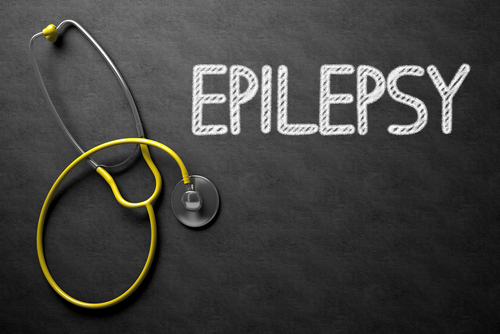Recent Advances in Epilepsy Research in India
M3 India Newsdesk Oct 31, 2017
Worldwide, there are 50 million people living with epilepsy, with the majority of cases in developing countries.

Epilepsy, a common neurological disease causing significant medical and social morbidity, is characterized by recurrent, usually unprovoked, epileptic seizures, as well as by the cognitive, psychosocial, and social consequences.Despite advances in epilepsy treatment, a large treatment gap exists in India, which can be attributed to the lack of knowledge of antiepileptic drugs (AEDs), poverty, cultural beliefs, stigma, poor healthcare infrastructure, and a shortage of trained professionals.The write-up briefs about the latest updates in the field of epilepsy in terms of diagnosis and treatment and other aspects of healthcare such as patient education, causes of the disease, and epileptogenesis.
A. Research Progress in the Causes of Epilepsy
Various forms of epilepsy such as symptomatic epilepsy, idiopathic epilepsy, partial generalized seizures, and the unclassified type of epilepsy, are caused by different factors. The common factors that have been studied in most of the cases and termed as ‘significant risk factors’ are febrile seizures, head injury, developmental delay, as well as family history of epilepsy, birth by complicated delivery, and neonatal seizures.
Role of infections
The infections that are commonly associated with epilepsy are Central Nervous System (CNS) infections, HIV, tuberculosis meningitis, rabies, Japanese B encephalitis, and malaria. Recent studies have focused on Neurocysticercosis (NCC)-associated infections, which is the most severe form of cysticercosis in which cysts develop in CNS.
Role of genetic variants
Many studies have shown that mutations at certain loci are associated with different types of epilepsies. These mutations are considered the reason why certain types of epilepsies run in families.
Pharmacoresistant Epilepsy (PRE)
If an adult patient (16 years and above) fails two or more Antiepileptic Drug (AED) therapies after an adequate duration of treatment, he is said to have PRE. Research studies indicate that in the intractable group in North India, 83% of patients had partial seizures, and 7% had generalized onset. PRE is characterized by:
- Radiological evidence of structural cerebral abnormality
- Non-response to first AED
- Delayed milestones
- High initial seizure frequency of more than one per month
- Partial seizure type
- Age of onset <14 years
- Febrile convulsions
B. Research Progress in the Diagnosis of Epilepsy
Video electroencephalogram (EEG) recording is considered the gold standard in the diagnosis of epilepsy. Off late, mobile phones have been increasingly used to capture seizures and classify epilepsy accurately.
The other diagnostic aids are Kramer Global Score ≤8, Early Childhood Epilepsy Severity Score (E-Chess) ≤9, and rapidly measurable single-slice parameters on scanning.
C. Research Progress in the Treatment of Epilepsy
New Drug Treatment
Epilepsies involve different mechanisms, therefore, a single therapy is not applicable for all conditions, and specifically tailored approaches are required for management of various syndromes.
Optimizing Already Existing Treatment
Optimization or reduction of the number of anti-epileptic drugs (AED) in patients with pharmaco-resistant epilepsy (PRE) leads to a reduction or to no change in seizure frequency with a significant decrease in adverse effects. Levetiracetam monotherapy and carbamazepine monotherapy are shown to be well tolerated.
Surgical Management of Epilepsy
Surgery remains an effective option for PRE as nearly one-third patients with newly diagnosed epilepsy on long-term follow-up will have their seizures unsatisfactorily controlled by treatment with available AEDs. The types of surgery could be curative or palliative.
Resective (amygdalohippocampectomy, lesionectomy, multilobar resections) and functional (hemispherotomy) surgeries are used to cure epilepsy. Palliative surgeries include multiple subpial transaction, corpus callosotomy, and vagal nerve stimulation.
D. Research progress in assessing the role of education in the treatment of epilepsy
Educational programs have proven to improve drug adherence even in people with a minimal educational background. Specifically, school-based health education programs for epilepsy awareness among schoolchildren are very important to bring changes in their attitude, behaviour, and practices.
E. Research progress in reducing the comorbidities associated with epilepsy
Comorbidities or co-occurring psychiatric, neuro-developmental, and sleep disorders are relatively common in individuals with epilepsy, especially in children and patients with longer duration of the disease. The neurosurgeons should aim to preserve important functional brain areas during the surgery.
F. Research progress in understanding the process of epileptogenesis
Epilepsy is considered to have multifactorial cause. Downregulation of certain receptors, plasma levels of certain proteins, atypical expression of few genes, and neuronal hyperexcitability are the most studied causes.
Epilepsy has a profound impact on the daily functioning of the patients. The research should be aimed at finding a cure for the disease, minimize the effect of its manifestations and diminish the morbidity associated with it.
-
Exclusive Write-ups & Webinars by KOLs
-
Daily Quiz by specialty
-
Paid Market Research Surveys
-
Case discussions, News & Journals' summaries